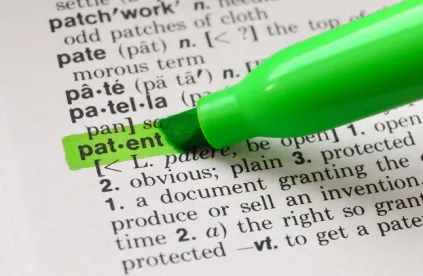Addressing whether a claimed feature was the result of routine optimization, as well as the Patent Trial and Appeal Board’s (PTAB or Board) obligation to consider factual evidence, the US Court of Appeals for the Federal Circuit vacated and remanded a PTAB decision finding that the claims of a patent were obvious, and instructed the PTAB to articulate its reasoning for such a finding. In re: Stepan Company, Case No. 16-1811 (Fed. Cir., Aug. 25, 2017) (Moore, J) (Lourie, J, dissenting).
Stepan owns a patent application directed to an herbicidal formulation containing glyphosate salt with a surfactant system. The surfactant enhances the salt’s effectiveness as an herbicide by providing better adherence to leaves and thereby enhancing penetration. The claims require using a surfactant system having a cloud point (the temperature at which a chemical becomes insoluble) above 70 °C. During prosecution, the Examiner rejected the claim based on prior art that described an herbicide and surfactant combination but recited a cloud point above 60 °C. The PTAB adopted the Examiner’s findings and upheld rejection of the patent claim. Stepan appealed.
On appeal, the Federal Circuit found that the PTAB committed three errors. First, the Federal Circuit found that the PTAB failed to explain why it would have been routine optimization to select and adjust the levels of the claimed surfactants and achieve a cloud point above 70 °C. The Federal Circuit ruled that “the Board must provide some rational underpinning explaining why a person of ordinary skill in the art would have arrived at the claimed invention through routine optimization.” The US Patent and Trademark Office argued that there was evidence for why the cloud point feature was the result of routine optimization. However, the Federal Circuit countered that the PTAB did not make these findings, and “we may not accept appellate counsel’s post hoc rationalization for agency action.”
Second, the Federal Circuit found that the PTAB had committed further error in failing to consider evidence proffered by appellant regarding notable differences in exemplified surfactant systems of the cited art and how the prior art did not achieve a cloud point above 70 °C. The PTAB merely stated that this evidence was not relevant. The Federal Circuit found that the proffered examples in the prior art contained components of the claimed surfactant system but did not achieve a cloud point above 70 °C, and were thus relevant.
Finally, the Federal Circuit found that by failing to adequately articulate its reasoning and not providing evidence that it would be obvious to achieve a cloud point greater than 70 °C, the PTAB failed to make a prima facie case of obviousness. The Court concluded that it was thus an error to shift the burden of proving patentability to Stepan.
Accordingly, the Federal Circuit vacated the decision and remanded to the PTAB for further proceedings.
Judge Lourie, in dissent, agreed that the PTAB should have articulated its reasoning but found that its conclusions were not erroneous. He argued, “[w]hile the majority faults the Board for not explaining itself adequately, based on reasoning with which I do not disagree, the rejection of the claims based on a reference we can plainly see, and which nearly anticipates the claims, does not in my view justify overturning the Board.”
Practice Note: A cursory statement that a claim feature is the result of routine optimization may not be sufficient to support a rejection based on obviousness. Rather, a rejection should articulate why a skilled artisan would perform the optimization and have a reasonable expectation of success.



 />i
/>i

